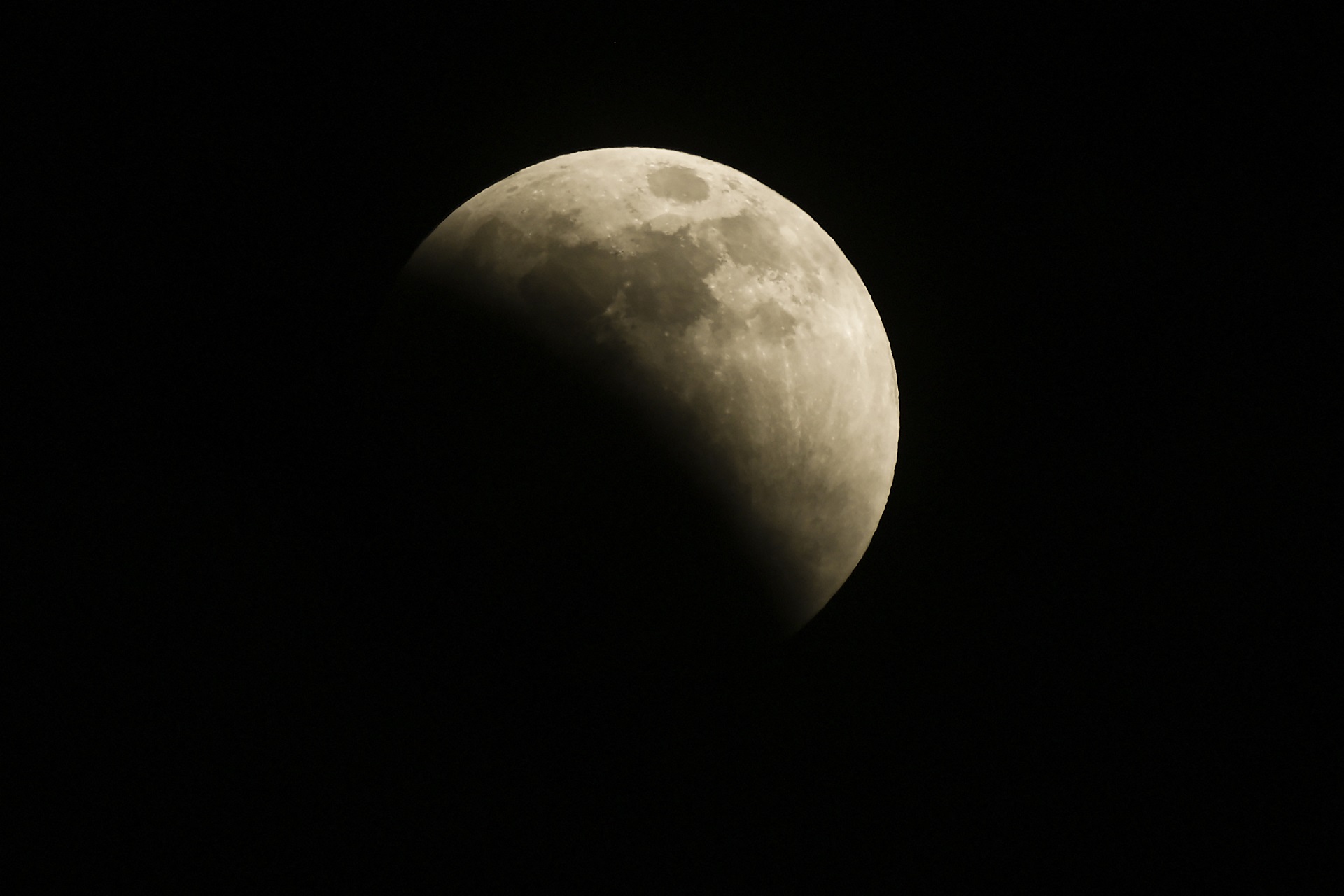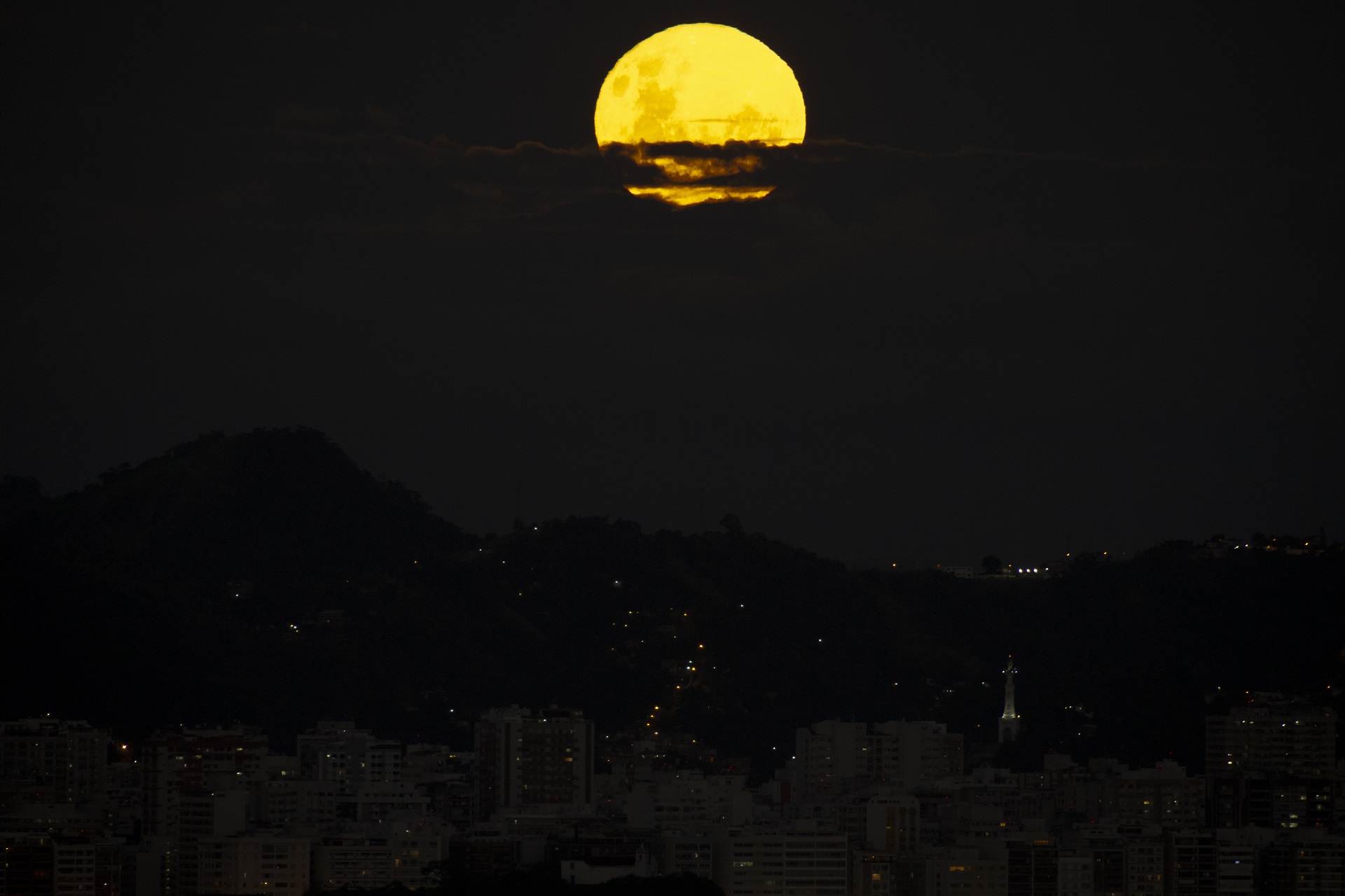Amazing photos of the Super Flower Blood Moon lunar eclipse of 2022


Looking for a telescope for the lunar eclipse? We recommend the Celestron Astro Fi 102 as the top pick in our best beginner's telescope guide.
The Full Flower Moon of May passed through Earth's shadow in the first total lunar eclipse of 2022 overnight on May 15 and 16 and the view was simply spectacular for stargazers with clear weather to see it.
The total lunar eclipse occurred as the full moon was near its closest point to Earth for the month, making it a supermoon - or a Super Flower Blood Moon lunar eclipse. The result, for those without the bad weather that affected many along the U.S. East Coast, was a truly stunning sight visible in regions across North and South America, Antarctica, Europe, Africa and the east Pacific.
This image from photographer Martin Bernetti with the AFP and Getty images shows a spectacular view of the Super Flower Blood Moon near its peak with a streak of green light adding a streak of action to the view.
Bernetti captured this image from Santiago, Chile, where the full moon views were unfettered by bad weather that affected other regions.
Click the arrows on the right for more stunning photos of the total lunar eclipse.

The image above comes from the Griffith Observatory in Los Angeles, which shows a view through a telescope as seen during the total phase, or Blood Moon portion, of the lunar eclipse.
At Griffith, observatory officials discussed ancient beliefs related to total lunar eclipses that likened it to a dragon eating the moon. The observatory then held a ceremony at the end of the totality phase in which visitors rang noisemakers and chanted "Dragon begone!" to drive away the dragon (a person in a costume) and return the moon to the night sky.

Bright stars are visible near the blood-red moon in this view of the Super Flower Blood Moon on May 15, 2022 from Toronto, Canada by photographer Steve Russell of the Toronto Star.
During the lunar eclipse, photographers across the Western Hemisphere had a chance to see the moon turn red in the first total lunar eclipse of the year.
"The shadow created by the Earth isn't completely black, it has a dark red tinge that gives it the nickname blood moon," Russell wrote in a caption.

Photographer Yamil Lage of the AFP and Getty captured this view of the moon from Havana, Cuba early on during the total lunar eclipse on May 15, 2022.
While the Blood Moon is traditionally the most sought after view of a total lunar eclipse, the penumbral and partial phases can be striking, too.
This image by Lage captures an early partial phase of the Super Flower Blood Moon as the moon was about halfway into Earth's shadow.

People look at the moon in Buenos Aires, Argentina during the Super Flower Blood Moon total lunar eclipse on May 15, 2022.
The first total lunar eclipse of 2022 had a potential audience estimated in the billions as the lunar event was visible from North and South America, as well as parts of Europe and Africa. Poor weather did cloud out some regions while others saw stunning views.
Unlike a solar eclipse, no special filters or protective gear is needed to safely observ a total lunar eclipse.

A spectacular full moon shines over Rio de Janeiro, Brazil on May 15, 2022 ahead of the total lunar eclipse on that same night.
Photographer Fabio Teixeira of the Anadolu Agency and Getty Images captured this view of a dazzling moon obscured by some clouds as it rose over Rio de Janeiro.

This NASA graphic shows the many stages of the total lunar eclipse of May 15, 2022.
During the lunar eclipse, observers with clear skies were able to see the moon dip into Earth's shadow, then get "swallowed" whole and turn a blood red color before making its way out of the shadow.
The eclipse featured 85 minutes of totality, the longest total lunar eclipse in 33 years after an August 1989 event.

This NASA map shows the full visibility range of the Super Flower Blood Moon eclipse of May 15-16, 2022.
With the entire continents of North America and South America in the prime visibility area, as well as Africa and much of Europe, the lunar event was likely visible to millions of people around the world.

While the total lunar eclipse of May 15-16 was amazing for some stargazers, for others it was a bit of a bust.
In the United States, foul weather across parts of the U.S. East Coast and Northwest were clouded out due to bad weather as shown in this weather visibility map by Space.com skywatching columnist Joe Rao.
If you missed this total lunar eclipse, the next one will be on Nov. 8, 2022.












Tariq is the Editor-in-Chief of Space.com and joined the team in 2001, first as an intern and staff writer, and later as an editor. He covers human spaceflight, exploration and space science, as well as skywatching and entertainment. He became Space.com's Managing Editor in 2009 and Editor-in-Chief in 2019. Before joining Space.com, Tariq was a staff reporter for The Los Angeles Times covering education and city beats in La Habra, Fullerton and Huntington Beach. In October 2022, Tariq received the Harry Kolcum Award for excellence in space reporting from the National Space Club Florida Committee. He is also an Eagle Scout (yes, he has the Space Exploration merit badge) and went to Space Camp four times as a kid and a fifth time as an adult. He has journalism degrees from the University of Southern California and New York University. You can find Tariq at Space.com and as the co-host to the This Week In Space podcast with space historian Rod Pyle on the TWiT network. To see his latest project, you can follow Tariq on Twitter @tariqjmalik.









